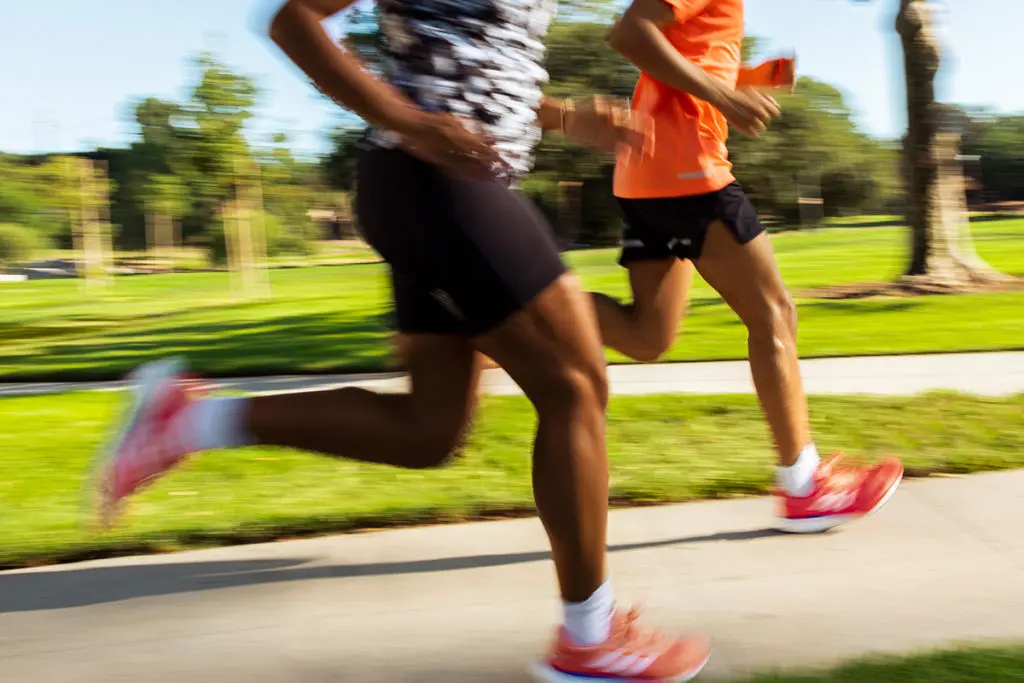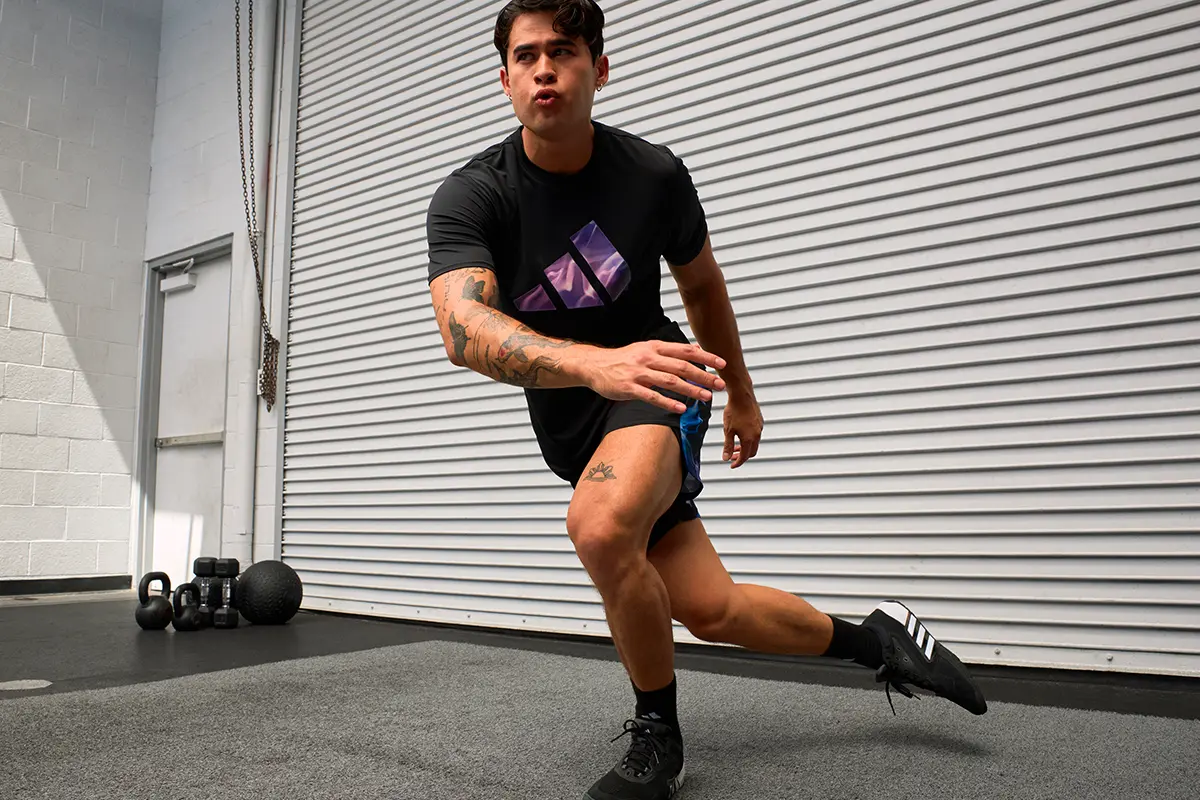HOW TO ADJUST YOUR STEPS PER MINUTE
If you want to improve your running time and speed, but don’t know where to begin, this article will help. We’ve all experimented by changing the number of steps per minute. The simple question of how many steps per minute you take has a complex relationship with your training and performance.
The frequency of your steps or strides is called the running cadence. Some people disagree on the ideal cadence for running: they say that “higher is best” while others suggest “whatever feels most comfortable.”
Which is it? This article explains how running pace is connected to performance, and demonstrates how you can adjust your step rate.
WHAT IS IDEAL RUNNING CADENCE
Jack Daniels, the elite running coach and not the other Jack Daniels, was the one who observed Olympic runners who had cadences exceeding 180 steps per minutes (SPM). Since then, cadence is associated with efficiency. The more you run, the faster your feet will hit the ground.
You may have heard that 180 is the magic number. The Coach Daniel’s observation was taken out of context to promote a quick fix that is one size fits all. We would love to break our own personal record by simply increasing our cadence up to 180 step per minute. It’s not realistic for everyone.
How can we increase the number of steps per minute that we take? We must examine the relationship between cadence of running and performance.
WHAT IS THE CADENCE MEASURE?
You need to accurately measure your cadence before you can work on increasing it. Here are two simple ways to measure your cadence.
How can I measure my cadence accurately?
Low tech: Count each right foot strike and multiply it by 4.
Pros : Simple method for one-off measurements
Cons: Distracts from running and is not the most accurate
High-tech: Various foot pods and wristwatches are available that have accurate cadence sensors. The adidas Running App also shows cadence. (iOS only)
Advantages: Accurate and continuous measurements for analysis at any time
Cons Wearable technology comes with a cost
COMMON CADENCE MISTAKES TO AVAIL
1. INCREASING THE RUNNING CADENCE TOO FAST
Your body will need time to adjust to a higher cadence. While most people would like to run faster, aiming for a cadence that is too high will increase your injury risk and temporarily decrease your running economy.
2. Ignoring your running CADENCE
The majority of runners choose a cadence lower than optimal. Lower cadences mean longer strides. Longer strides result in higher heel-strike impacts and an increased risk for injury.
FACTORS IMPACTING RUNNING CADENCE
Consider these factors if you want to increase your cadence.
LEG LENGTH AND HEIGHT
The cadence of a runner is affected by several factors including height and leg size. Taller runners take longer strides, and have lower cadences. This is good information, but it’s not very helpful because we can’t alter our height or leg size.
MUSCLE FABRIC AND TRAINING HISTORIA
There are other factors that can affect running cadence, including training history, acute fatigue and even predominant fiber. There is some evidence that shows fast twitch fibers perform better at higher cadences. However, it’s unclear what impact this has on performance.
RUNNING PACE
Running cadence is determined by more than just diet, fitness or motivation. It’s important to note that the running pace has a greater impact on the running cadence than any other factor.
Recent research published in the Journal of Applied Physiology has shown this. Researchers measured cadence of 25 elite ultramarathoners in a 100 km race. The athletes clustered at 182 SPM on average, which supports the idea that 180 is the holy-grail of cadence.
The same study showed that individual step rates varied widely, ranging from 155 steps per minute to an amazing 203! The study found that cadence did not depend on fatigue, weight or age of athletes, nor was it affected by sex.

The cadence decreased as they slowed down. As they slowed down, their cadence increased. (9) In other words: runners aren’t that fast because they only take 180 steps per minutes. They run fast because they take 180 steps every minute.
You can’t just blindly follow a cadence. You need to match your cadence with your pace and anatomy, regardless of whether you’re running half-marathons or half-hour.
A closer look at running pace
Compare the cadences of elite athletes who run at different speeds. The runners ran approximately 175 steps every minute at a pace of 5:20 per mile (3:20 per kilometer). This increased to 200 SPM at 3:50 per miles pace (2:23 km). According to research, runners will take six more steps per minute with every meter of speed gain.
You’ll be surprised at how fast you can run if you have ever done it. Your cadence is more than likely somewhere between 180 and 200. What is the takeaway? The takeaway?
4 TIPS FOR INCREASING YOUR RUNNING CADENCE
It is not a good idea to force a higher cadence in order to improve performance. As we have seen, the cadence we choose is determined by our speed. Although we all naturally choose a lower cadence than optimal, retraining ourselves to a higher rate of steps would be beneficial.
Here are some tips on how to increase cadence in a safe manner:
1.KNOW CADENCE
Track your cadence at each speed you run. When racing, it is likely that you will run faster with a higher rate of steps. You will gradually learn that your cadence has a direct correlation to the speed at which you run.
2. FITNESS AS THE PRIORITY
Speed determines cadence. You will find that as your fitness increases, you can maintain a faster cadence. Your cadence is almost certain to be higher than 170 SPM if you can run 5 minutes mile (1.6 km) in 5 minutes.
Try Cross-Training
Are you ready to improve your running? Start the running strong plan in the adidas Training app. This four-week plan is designed to increase strength and mobility.
3.MAKE SMALL CHANGES
Avoid injuries by not increasing your step rate. Your body will adapt to the gradual adjustments by taking approximately five steps every minute. This won’t cause injury or affect performance. It is not necessary to run 180 degrees on every run. The goal is to increase your cadence at a certain pace.

4. Monitor Your heart rate
Research has shown that the heart rate can be used as a tool to determine optimum cadence. [11]Recording your HR at various step speeds between 150 and 200. The step rate that produces the lowest HR will be the most effective! Let your heart rate stabilize for a few minutes at each new cadence.
SUMMARY
You can’t manipulate your running cadence to get instant results. As your fitness improves , and as you increase your pace, your step rate should naturally increase.
Most runners, regardless of their ability level choose a lower cadence than optimal. It’s a good idea to increase your cadence at any pace.
Wearable technology can provide accurate step rate analyses. You will eventually find the right cadence to suit your activity. This will result in a lower impact force and improved running economy.

